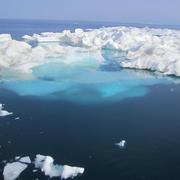Alaska Science Center
Software
Arctic Shorebird Population Model
This R script will run one example of the stochastic matrix models run by Weiser et al. (2020) to simulate shorebird populations. The model predicts population growth rates and elasticity values of vital rates. The example script is stand-alone and contains input values for one example species; input values for the other species are provided in the manuscript.
Python scripts for Bioinformatics, 2017
Bioinformatics software repository containing python scripts intended for search and download of genetic information obtained from GenBank NCBI genetics data resources in support of developing PCR primers, targeted genetic databases, genetic analyses, and data interpretation. Includes multiple functions to streamline this process.
USGS Sea Ice Email Script, 2017
Daily sea ice imagery and charting benefits logistics and navigational planning in the Alaskan Arctic waters, yet access to these data often requires high bandwidth data access and substantial GIS processing.
Model selection in Cormack-Jolly-Seber mark-recapture investigations
Cormack-Jolly-Seber (CJS) mark-recapture models are widely utilized in ecology, providing estimates of vital rates and abundance that are difficult to obtain using other means.
QFASA robustness to assumption violations
Quantitative fatty acid signature analysis (QFASA; Iverson et al. 2004) has become a common method of estimating diet composition, especially for marine mammals, but the performance of the method has received limited investigation.
Quantitative Fatty Acid Signature Analysis in R (qfasar)
Quantitative fatty acid signature analysis (QFASA) is a method of diet estimation introduced over a decade ago (Iverson et al. 2004).
Douglas Argos-Filter Algorithm
Version 8.50 of the Douglas Argos-Filter (DAF) is qualitatively equivalent to the algorithm that is now freely available through Movebank (www.movebank.org), and described in a 2012 article published in Methods in Ecology and Evolution.








